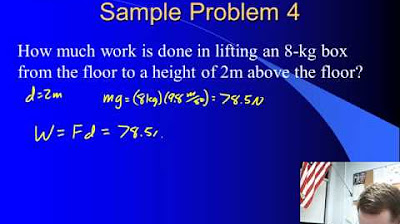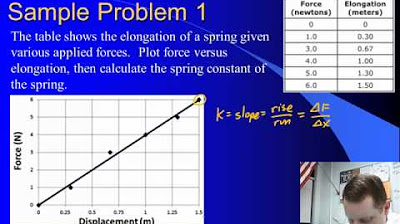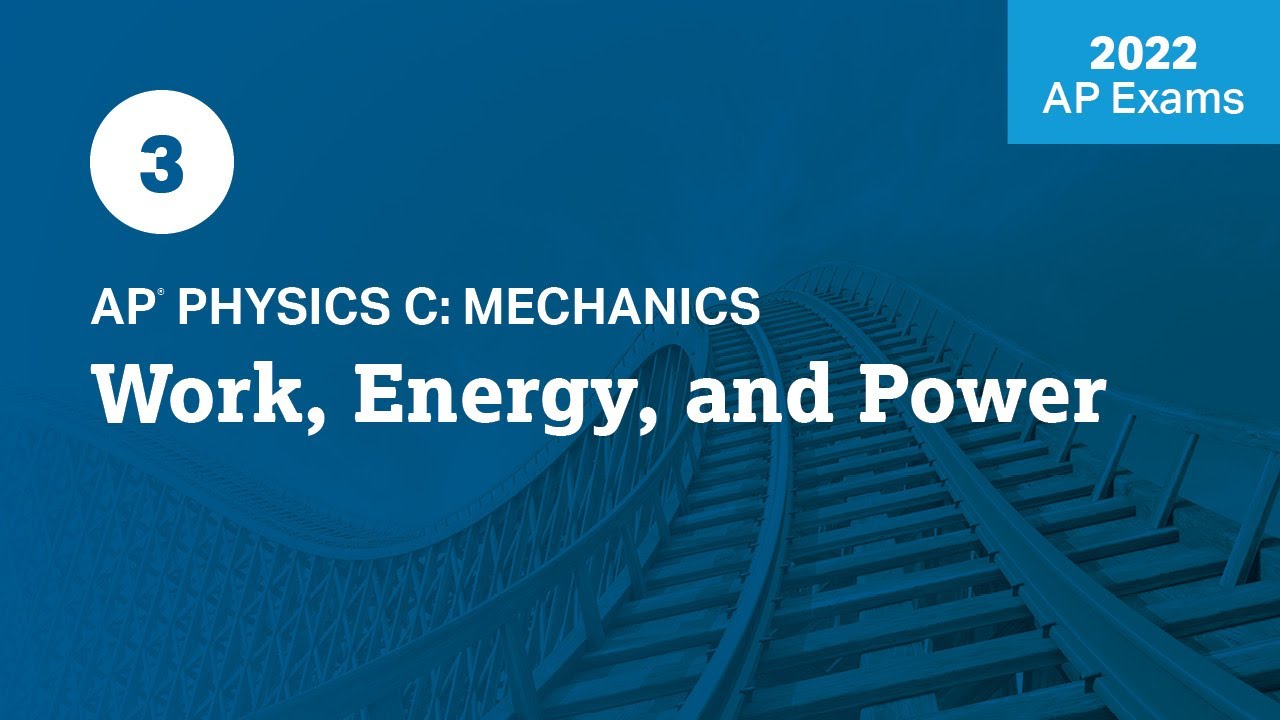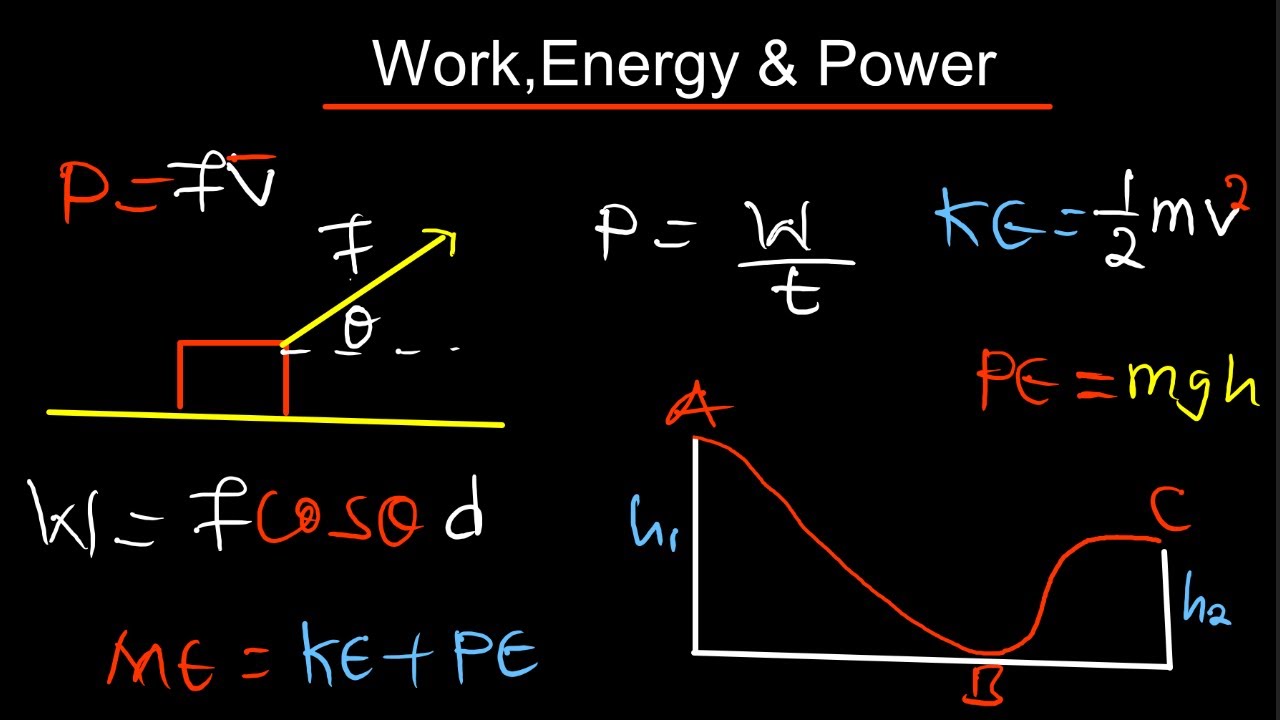Work, Energy and Power in CrossFit Solutions, Part 2
TLDRIn this informative video, the presenter, Dan Fullerton, delves into the concepts of work, energy, and power within the context of CrossFit exercises. He illustrates these principles through various scenarios featuring athletes like Tom, Chris, Heidi, James, and Aaron, who perform different workouts such as thrusters, toes to bar, rope climbs, pull-ups, and box jumps. By calculating the force, displacement, and time, the video demonstrates how to determine the work done and power generated during these activities, as well as the energy expenditure and potential velocities involved. The video concludes with a reminder that despite the energy exerted, the net work is zero due to the return to the starting position, reinforcing the understanding of physical principles in the realm of fitness.
Takeaways
- 🏋️♂️ In the CrossFit problem set, Tom performs 10 thrusters with a 45 kg barbell in 20 seconds.
- 🔢 The applied force to lift the barbell is at least equal to its weight (45 kg * 9.8 m/s²), resulting in 441 Newtons.
- 🚀 The work done in lifting the barbell for 2 seconds is calculated as force * displacement, equaling 662 Joules.
- 💪 The power developed in lifting the bar is the work done per unit of time, calculated as 331 Watts.
- 📈 For the entire 20 seconds, the net work performed on the bar is zero since the total displacement is zero.
- 🏃♀️ Chris does toes to Bar with a period of 1.4 seconds per repetition and a frequency of 0.71 Hertz.
- 🧗 Heidi climbs a rope with a minimum force equal to her weight (50 kg * 9.8 m/s²), which is 490 Newtons.
- 🌐 The minimum work and energy Heidi must expend to climb the rope is 2,450 Joules.
- 🔄 If Heidi releases the rope at the top, her potential energy is converted into kinetic energy, with a final velocity of approximately 9.9 m/s.
- 🤸♂️ James executes butterfly chest to Bar pull-ups with a frequency of 0.875 Hertz and a period of 1.14 seconds per pull-up.
- 🏆 Aaron jumps onto a 0.6 m box, doing 20 jumps in 52 seconds, with each jump requiring 300 Joules of work and energy.
Q & A
What is the mass of the barbell Tom uses for thrusters?
-The mass of the barbell Tom uses is 45 kg.
How much force does Tom need to apply to lift the barbell upwards?
-Tom needs to apply a force equal to at least the weight of the barbell, which is 441 Newtons (45 kg times 9.8 m/s^2).
What is the total work done by Tom while lifting the barbell for 2 seconds?
-The total work done by Tom is 662 Joules (Force of 441 Newtons times displacement of 1.5 meters).
What is the power developed by Tom while lifting the barbell?
-The power developed is 331 Watts (Work done of 662 Joules divided by time of 2 seconds).
What is the period of each toes to bar exercise performed by Chris?
-The period of each toes to bar exercise is 1.4 seconds (28 seconds for 20 repetitions).
What is the minimum force Heidi must apply to the rope to move upward?
-Heidi must apply a force equal to her weight, which is 490 Newtons (50 kg times 9.8 m/s^2).
How much work does Heidi do to climb the rope?
-Heidi does 2450 Joules of work (Force of 490 Newtons times displacement of 5 meters).
What is Heidi's gravitational potential energy at the top of the rope?
-Heidi's gravitational potential energy at the top is 2450 Joules (same as the work done to climb the rope).
What would be Heidi's velocity if she were to release the rope at the highest point?
-Heidi's velocity would be approximately 9.9 m/s (square root of 2 times 9.8 m/s^2 times 5 m, neglecting air resistance).
How many seconds does it take for Aaron to complete each box jump?
-It takes Aaron approximately 2.6 seconds to complete each box jump (52 seconds for 20 jumps).
What is the total energy expended by Aaron for the 20 box jumps?
-The total energy expended by Aaron is 6000 Joules (300 Joules per jump multiplied by 20 jumps).
What is the average power expended by Aaron during the 20 box jumps?
-The average power expended by Aaron is 115 Watts (6000 Joules divided by 52 seconds).
Outlines
🏋️♂️ Work, Energy, and Power in CrossFit: Tom's Thrusters
This paragraph introduces the video's focus on solving work, energy, and power problems related to CrossFit exercises, starting with Tom's performance of thrusters. Tom uses a 45 kg barbell and completes the exercise in 20 seconds. The analysis begins with a free body diagram, identifying the applied force (f_app) and the weight of the barbell. The required force to lift the barbell is equal to its mass (45 kg) times the acceleration due to gravity (9.8 m/s^2), totaling 441 Newtons. The work done (W) in lifting the barbell from 7 m to 2.2 m in 2 seconds is calculated as force (F) times displacement (s), resulting in 662 Joules. Power (P), the rate of doing work, is then determined by dividing the work by the time, yielding 331 Watts. The paragraph concludes by discussing the net work done on the barbell over the entire 20 seconds, which is zero since the barbell returns to its starting position.
🤸♀️ CrossFit Analysis: Chris's Toes to Bar and Heidi's Rope Climb
The second paragraph delves into Chris's toes to Bar exercise and Heidi's rope climb, analyzing their periods, frequencies, and the forces involved. Chris performs 20 repetitions in 28 seconds, leading to a period of 1.4 seconds per repetition and a frequency of 0.71 Hz. Heidi, with a mass of 50 kg, climbs 5 m three times in 40 seconds. The minimum force she must apply to the rope is her weight in Newtons (490 N). The work done by Heidi is 2,450 Joules, which is also the minimum energy she expends. Her gravitational potential energy at the top of the rope is calculated as 2,450 Joules, which, if she were to release the rope, would convert into kinetic energy. Using the conservation of energy principle, her velocity upon release would be approximately 9.9 m/s. The paragraph also calculates Heidi's maximum kinetic energy if she were to jump from the top of the rope, which equals the potential energy at the top.
🏃♂️ Energy Expenditure and Power Output: James's Pull-ups and Aaron's Box Jumps
The final paragraph discusses James's butterfly chest to bar pull-ups and Aaron's box jumps, focusing on their frequency, energy expenditure, and power output. James performs 21 repetitions in 24 seconds, resulting in a frequency of 0.875 Hz and a duration of 1.14 seconds per pull-up. Aaron, weighing 500 Newtons, jumps onto a 0.6 m box 20 times in 52 seconds. Each jump requires 300 Joules of work, and the total energy expenditure for all jumps is 6,000 Joules. The average power output during the jumps is calculated as 115 Watts, determined by dividing the total work by the time. The paragraph concludes with a discussion on the net work done on Aaron, which is zero since there is no net displacement after the exercise.
Mindmap
Keywords
💡Work
💡Energy
💡Power
💡Force
💡Displacement
💡Acceleration due to gravity
💡Gravitational potential energy
💡Kinetic energy
💡Net work
💡Frequency
💡Velocity
Highlights
Tom performs 10 thrusters with a 45 kg barbell in 20 seconds.
The applied force must match the weight of the barbell to move it upwards.
The force applied is at least equal to mg (441 Newtons).
Work done is calculated as force times displacement (662 Joules).
Power developed is the rate of work done (331 Watts).
Net work over the entire 20 seconds is zero since the bar ends up where it started.
Chris performs 20 toes to Bar exercises in 28 seconds.
The period of each toes to Bar exercise is 1.4 seconds.
Frequency is the inverse of the period (0.71 Hertz).
Heidi climbs 5 m up a rope three times in 40 seconds.
Heidi must apply a force equal to her weight (490 Newtons) to move upward.
Minimum work done by Heidi to climb the rope is 2450 Joules.
Heidi's gravitational potential energy at the top of the rope is 2450 Joules.
If Heidi releases the rope at the highest point, she would strike the ground with a velocity of 9.9 m/s.
James performs 21 butterfly chest to Bar pull-ups in 24 seconds.
James executes his pull-ups with a frequency of 0.875 Hertz.
Aaron jumps from the ground onto a 0.6 m box 20 times in 52 seconds.
Work done by Aaron in jumping onto the box is 300 Joules.
Aaron must expend a minimum energy of 300 Joules per jump.
For the 20 jumps, Aaron expends a total energy of 6000 Joules.
Average power expended by Aaron during the 20 jumps is 115 Watts.
Net work done on Aaron at the end of the exercise is zero.
Transcripts
5.0 / 5 (0 votes)
Thanks for rating:





